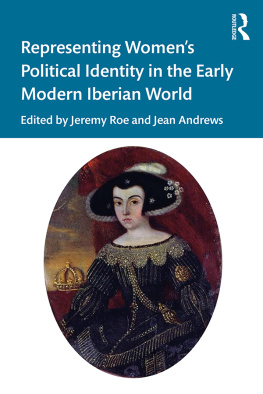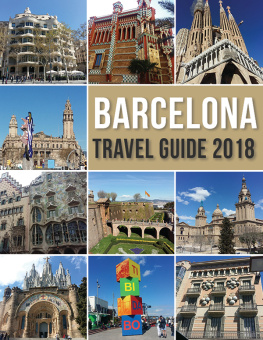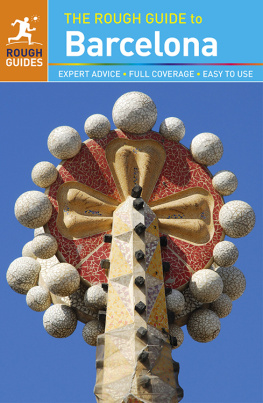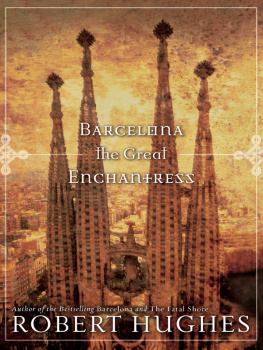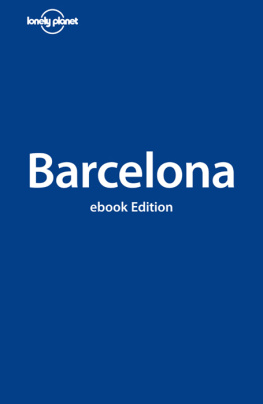Author: Jeremy Roe
Layout:
Baseline Co. Ltd.
61A-63A Vo Van Tan Street
th Floor
District 3, Ho Chi Minh City
Vietnam
Confidential Concepts, worldwide, USA
Parkstone Press International, New York, USA
Catdra Gaud photographs pp.16-21-31-60-109-110-113-140
Eduard Sol photograph p.70
Luis Gueilburt photograph p.111
Casa Mil, La Pedrera (Barcelona). Thanks to Fundaci Caixa Catalunya.
Franois Devos for all photographs
Special thanks to Gaud Club
ISBN: 978-1-78310-742-1
All media rights reserved worldwide.
Unless otherwise mentioned, all reproductions are the copyright of the photographers. Despite due diligence, we have been unable to identify copyright holders in all cases. Anyone with a claim should contact the publisher.
Author: Jeremy Roe
ANTONI
GAUD

CONTENTS
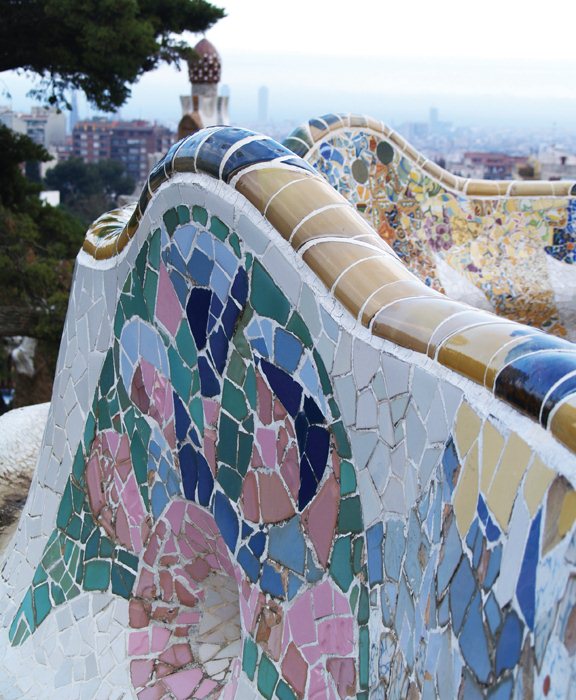
Park Gell, trencads mosac of the bench.
Essential Gaud
In order to understand the real significance of Gauds architecture it is necessary to take into account various factors which influenced his thinking. His family background, childhood, place of birth and schooling, the historical context of Catalonia and Spain during his lifetime, his friends and relations, all form the framework for the very special and very distinct architecture of Antoni Gaud Cornet.
However, his personality is hard to capture for various reasons. In the first place, Gauds shy and retiring nature meant that there are virtually no original documents in existence that show what he was like. He closely guarded his privacy, and it is a sancta sanctorum into which the historian should not try to penetrate, both out of respect and because he lacks sufficient judgement to draw any definite conclusions.
Hence the numerous fantasies that have been written about Gaud fabrications that are of no historical value despite their appeal to the public, ever eager for details of the intimate lives of great men regardless of whether or not they are true. Gauds family background must be taken very much into account, for the nature of the trade which his father and both his paternal and maternal grandfathers followed is very revealing. More than five generations of Gauds had been coppersmiths, producing the vats for distilling alcohol from the grapes grown in the Camp de Tarragona.
The spatial aspects of the curved forms of these vats, made of beaten copper plates, had a considerable influence on Gaud, as he himself admitted, for they taught him to visualise bodies in space rather than projected geometrically on to a single plane. These visions from his childhood and his fathers workshop of brightly coloured, shining, malleable shapes, sculptural living forms, persisted in his architecture.
Brought up in a Christian family of artisans and craftsmen, he went to school at the Piarist college in Reus, where he received a broad-minded and humanistic education that undoubtedly played and important part in defining his character. There he met Eduard Toda Gell, who sowed in him the seeds of a love of the monastery of Poblet and of the history of Catalonia in general.
The town of Reus in the middle of the nineteenth century was a centre of political, radical and republican agitation. Although Gaud never left any desire to play an active part in politics, nor in anything else other than his own particular form of architecture, it is clear that he caught the strong feelings of those around him and became deeply concerned about the serious problems from which the country suffered.
He was a student during the last of the Carlist Wars, and although he never actually had to take part in any fighting he was mobilised for the entire duration.
When later, while studying architecture in Barcelona, he showed his concern for the problems of the working classes by collaborating in the design of La Obrera Mataronense, the first co-operative factory in Spain, he was putting into practice some of the ideas he had formed during his schooldays in Reus.
Reus and the nearby village of Riudoms, where he spent many summers in a small cottage that his father owned, both had an influence on Gaud, not only through the character of their inhabitants but also through their climate and landscape.
Dry stony lands, with a special luminosity, where vines, almonds, hazels, cypresses, carobs, pines and olives grew: lands that could have been set in Lazio or the Peloponnese; Mediterranean lands par excellence, which Gaud considered the ideal place in which to contemplate Nature, for the sun shines with unusual splendour and falls on the ground at an angle of forty-five degrees, producing the most perfect light effects. Reality in all its truth and beauty could be found in the landscape of the Camp de Tarragona under the Mediterranean sun.
Gaud considered himself an observer of things in their natural state. His immense imagination was based only on the capacity to assimilate the reality of Nature, exquisitely lit and portrayed by the sun of that beautiful region. But we all know that the sun - including the sun in the Camp de Tarragona- shines for everyone, but it does not suggest to everyone what it suggested to Gaud. And this brings us to a second factor, for Gauds capacity for observation was a result of his being a sickly child who suffered from rheumatic fever, which prevented him from joining in the games the other children played. Isolated and alone, he spent the best part of his time observing Nature, and he realised, with intelligent perception, that of the infinite number of forms that exist in the world, some are highly suitable for structures whilst others are highly suitable for decoration.
At the same time he noted that structure and decoration occur simultaneously in Nature - in plants, rocks and animals - and that Nature creates structural forms that are both statically perfect and extremely beautiful, and are based merely on functionality.
The structural part of a tree and the skeleton of a mammal do no more than strictly conform to the laws of gravity, and hence the laws of mechanics.
The scent and formal beauty of a flower are no more than the mechanisms for attracting insects and thus ensuring the reproduction of the species. Nature creates beautifully decorated structures without the slightest intention of creating works of art.
At this stage we must consider another point in relation to Gauds character. It has been explained how the concept of structure was formed in his mind from the beaten copper shapes that his father produced in his workshop. But among Gauds ancestors there were no architects or even bricklayers. This meant that he was not burdened with three thousand years of architectural culture, as occurs in families of architects.
Although the history of architecture has taken many turns, and seemingly very different styles have followed each other in succession, in actual fact from the early Egyptians to the present day the architecture of architects has been based on simple geometry involving lines, two-dimensional figures and regular polyhedrons combined with spheres, ellipses and circles. This architecture was always produced from plans - plans which have always been produced with simple instruments like the compass and set square and from which the masons have always worked.
Gaud, however, saw that Nature made to preliminary drawings and appeared to use none of these instruments for constructing its beautifully decorated structures. Moreover, Nature, whose field covers all forms of geometry, rarely uses the most simplified one which is common to the architects of all ages. Without any architectural preconceptions, but at the same time with great humility, he considered that there is nothing more logical than that which is created by Nature, with millions of years of trying out forms until they were perfected.
Next page

